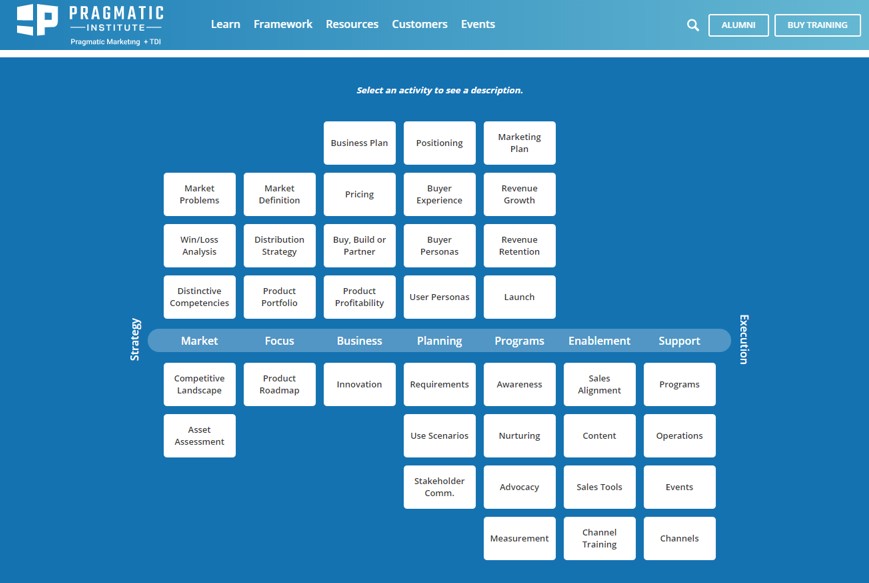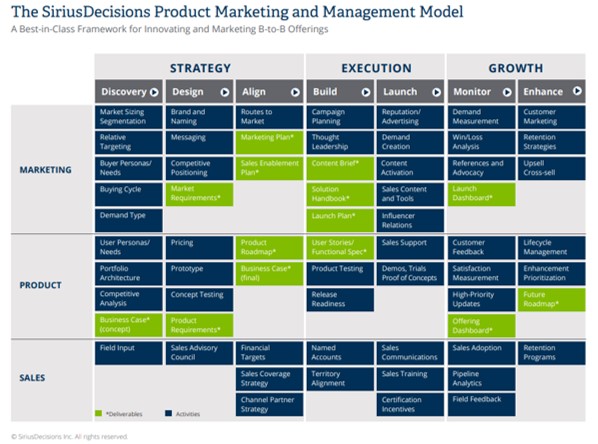Helping Product Management Understand the Role of Product Marketing
Conveying the Role of Product Marketing to Product Management Teams is Critical to Set the Right Tone for What They Can Expect
A common problem for Product Marketers is that their Product Manager counterparts don’t always understand or appreciate their role. This leads to consternation on the part of Product Markers as it makes it harder to do their job to the highest degree.
As a result, it’s critical to ensure the right tone is set with Product Managers whether you are just starting the role or you’ve been in the role a long time.
But how do you do it and where do you start?
A Partner, Not a Support or Subordinate Function
First and foremost, you need to establish the right perspective with your Product Management counterparts. As a Product Marketer, you want to be a trusted partner who Product Managers rely on to make the products or offerings they own successful in the marketplace. You are their partner and not their subordinate, nor a support function to Product Management. The collaboration is one of a partnership where both partners work toward a common goal. In effect, Product Marketing needs to operate as a checks and balances on overall development efforts.
For any organization, Product Marketing should have early visibility to new offerings or enhancements and be able to shape or provide inputs or perspective into definition of those new offerings or enhancements. If you work at a smaller or less mature organization where a PLC is non-existent or insufficiently applied, this will also be important because Product Marketing needs to be empowered to act as a champion for the customer and push back on launches, if necessary, if it’s felt that the offering does not meet market needs or provides a poor user experience. Hopefully, that is never the case at your organization but unfortunately, there are times when teams want to get a solution out to market to check the box even if the solution is really not market ready.
Product Marketing’s Chief Role
Product Marketing is the Marketing team’s liaison to Product Management to effect the successful launch and go-to-market for new offerings, enhanced offerings and growth of the existing portfolio. While Product Managers ‘own’ the product (hence, why they are sometimes called “Product Owners”), you largely own the Go-to-Market of that product while you both share in the product’s success or failure. Within this, the core areas of your role are:
- Act as Marketing’s chief liaison to Product Management
- Formulate the go-to-market strategy for new or enhanced offerings
- Perform market and competitive analysis to guide overall Marketing efforts
- Ensures target personas are well understood and documented
- Owns positioning and marketing in the marketplace
- Enable Sales on all aspects of the portfolio (you don’t likely own all of Sales Enablement, just key parts)
- Act as an alternative voice of the customer to drive insights that can both influence and help the product or portfolio succeed
- Ensure ongoing marketing efforts and cooperation for growth for the entire portfolio outside of the PLC process
Get agreement on the core areas above before moving deeper in the conversation.
Next, because Product Marketing’s role is somewhat multi-dimensional, I suggest using the Product Life Cycle (PLC) framework you have in place as a framework for a conversation. For larger enterprises, it’s likely some type of process exists that may already distinguish between the functions somewhat. At this level as well, job descriptions are fairly well-defined and can be leveraged. Treat this as the preparation phase.
You want to next then outline the practical aspects of what’s reflected in the PLC framework as well as map over job responsibilities in the job description to the framework. I would recommend using a presentation tool to lay out conceptually the roles and responsibilities. Keep in mind not everything is going to center around the PLC. That’s okay. Capture those on a separate slide.
As you do so, you should be thinking about how you want to shape the role to have an impact on the business. That means layering in any areas you feel important that aren’t already represented.
For smaller and less mature organizations that lack a well-formed PLC process, there are frameworks that can help here that spell out many of the functions that need to take place across a PLC.
The Pragmatic Institute’s (Formerly Pragmatic Marketing) “Pragmatic Framework” provides a good perspective on the activities that need to take place.

A drawback here is that the roles aren’t formally divided by Product Management and Product Marketing roles. As well, they aren’t aligned to a typical PLC process to understand at what stages they fall.
Another framework is the SiriusDecisions Product Marketing and Management Model.

What I like here is that SiriusDecisions has gone the extra mile to reflect the ‘what needs to be done’ with the ‘when it needs to be done’ and ‘by whom.’
And between the two frameworks, you have a pretty good representation of all of the potential activities Product Marketing is on the hook for. In fact, it’s possible to have the discussion from both perspectives using both the Pragmatic Institute’s framework and SiriusDecisions’ model.
What Product Managers Can Expect Going Forward
You want to convey that you will be working to standardize on processes as much as possible. If your organization lacks a PLC altogether or a well-defined one, be a champion for developing or improving the existing one.
Product Marketers tend to think that Product Managers automatically understand and believe in the PLC and this is just not the case. I’ve seen Product Managers who have no experience or idea on why a PLC is so important (see my post, “When Product Management is De-Linked from a PLC“). You want to standardize as much as possible because this helps Product Management and other teams involved in the PLC process understand how an organization effectively and efficiently goes to market. And it trains Product Managers quickly on how your efforts are going to help them bring a new or enhanced offering to market.
Document Your Discussion?
It may or may not be necessary to document the discussion. You know, the uncomfortable email that says, “…we agreed on this list of…” However, use your PowerPoint used in your discussion as your overall agreed on framework or split of responsibilities and send that. This way, it can also be used as a reference when needed for both teams.
Share
Keep in mind that there are other teams who could benefit from better understanding the role of Product Marketing as separate from Product Management. This includes Engineering/Development, Operations, Finance, Sales, Project Management, Support and other teams that may be connected to go-to-market for new and enhanced offerings. Share the material you developed so they can appreciate how your function contributes to overall go-to-market success. You may even want to have 1:1s with those teams to discuss roles further.
As a Product Marketer, David has successfully launched products, services, solutions and platforms across a number of disciplines in the technology industry. David’s passion for Product Marketing and his eye for seeing how Product Marketing can lead to even stronger business outcomes led him to bring his expertise and knowledge to Shoot the Curl Marketing.



